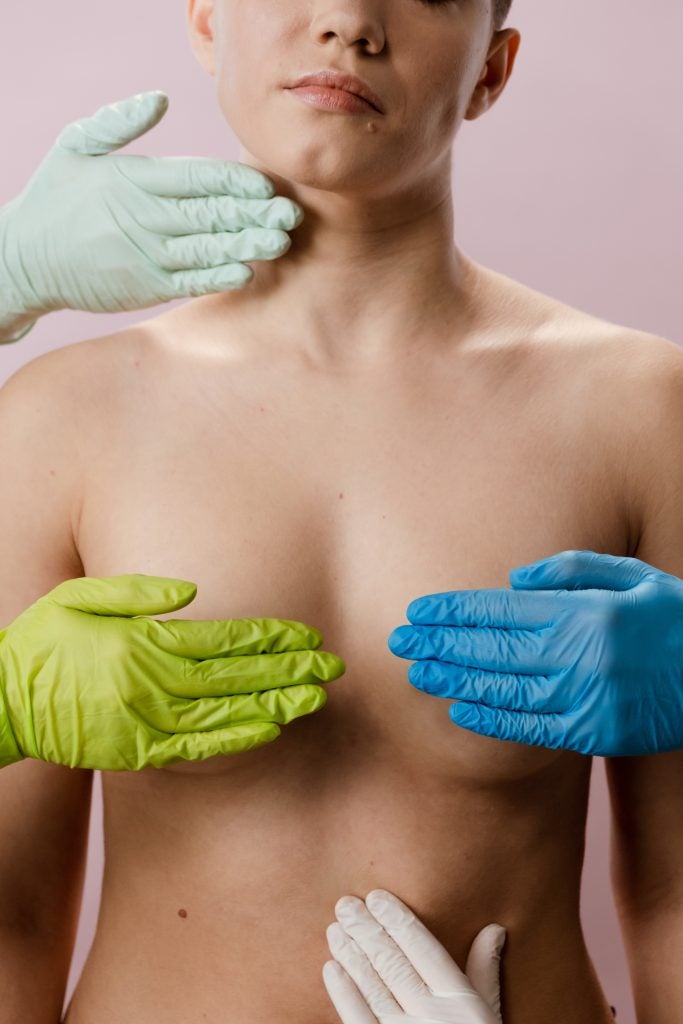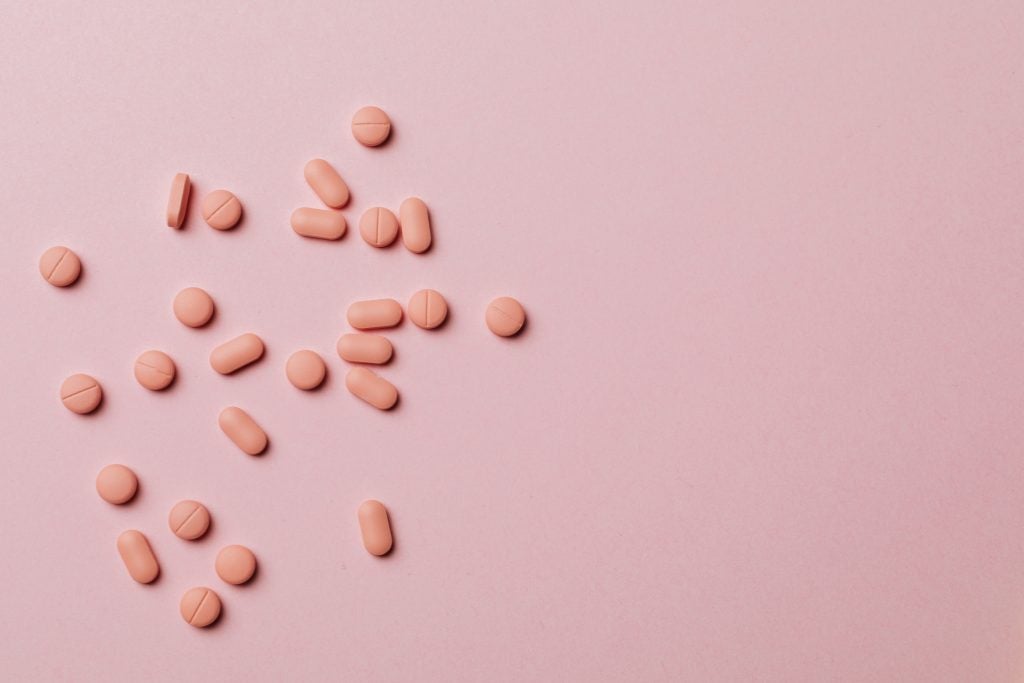
Table of Contents
Fibrocystic Breast Condition (FBC)
Fibrocystic breast condition (FBC) involves the glandular tissue of the breast, which biologically functions to produce and secrete milk.1 Fibrocystic breasts can feel lumpy in texture, termed by doctors as “nodular” or “glandular” breast tissue. FBC is very common; approximately half of all females experience fibrocystic breast changes at some point during their lives2. Although fibrocystic breasts are benign in nature, they can cause discomfort. A female can utilize simple self-care methods for symptom management; however, if the pain persists or worsens she should contact a doctor in order to rule out the risk of breast cancer.
Fibrocystic Breast Disease and Fibrocystic Breast Condition
Fibrocystic Breast Disease (FBD) and FBC are virtually the same thing. Doctors have almost entirely discontinued using the term “fibrocystic breast disease” because this condition is not technically a disease. It is now frequently referred to as “fibrocystic breasts,” or fibrocystic breast condition.2
Fibrocystic Breasts and Breast Cancer
Fibrocystic breast condition does not cause or predict breast cancer. However, it remains important for women need to monitor any changes in their breasts, and obtain yearly mammograms. Tumors can be overlooked if they are assumed to be fibrocystic lumps. Knowing one’s family history and self-examining one’s own breasts are crucial to a female’s health. We recommend females keep a journal of their fibrocystic breast changes so that they can monitor any changes.
Symptoms
- Breast lumps or areas of thickening breast tissue
- General breast pain or tenderness
- Breast lumps that fluctuate in size
- Changes that occur in both breasts rather than one
- Green or brown discharge that leaks from the nipples (less common symptom)
- Increase in breast pain or lumpiness from ovulation to just before a female’s period
Causes

Each month, a female’s body releases the hormones estrogen and progesterone in preparation for a possible pregnancy. Estrogen, progesterone, prolactin, insulin, and thyroid hormones cause breast tissue cells to grow and divide. These hormones stimulate the growth of glandular breast tissue, increase blood vessel activity, and revitalize cell metabolism and the supporting tissue.1 This process can contribute to the feelings of breast fullness and fluid retention many females experience prior to beginning their menstrual cycles. Once a female’s period has ended, these stimulated breast cells go through a process called apoptosis in which the cells die and are digested by existing cells. Throughout this process, fragments of broken cells and inflammation can create scar tissue in the breasts. This damages the ducts and glandular tissue of the breast and causes the symptoms of fibrocystic breasts.1 The quantity of cell fragments products, the efficiency of cell cleanup, and the degree of inflammation vary among females. There can be fluctuations in nodule size and pain from month to month and even amongst different regions of the breast. The severity of fibrocystic breast condition symptoms varies among females.
Fibrocystic breast condition typically affects females aged 30 and older. This is because fibrocystic breasts result from the repetition of menstrual cycles and the accumulation of fluid and cells within the breast. This process begins with puberty and continues throughout menopause. After menopause, fibrocystic breast condition becomes less of an issue because hormone levels decrease.
Diagnosis
Fibrocystic breast condition can be detected using the following methods:
- Clinical breast exam: A doctor manually checks the breasts and lymph nodes (underarm and neck area). If medical history and the clinical breast exam do not indicate any issues, then the testing process ends here. If anything suspicious or alarming is detected, the doctor may ask the female to return in several weeks after her menstrual period has ended to determine whether these symptoms are a result of her period or something else.
- Mammogram: If the doctor detects a breast lump or area of atypical thickening, a mammogram (X-ray) may be recommended. These allow for a better understanding of what is occurring inside the breasts. Even if the breast exam does not reveal any threats, the doctor may suggest a mammogram if the female is over the age of 30 in order to rule out breast cancer completely.
- Ultrasound: An ultrasound uses sound waves to create an image of the breast, and it is often used in conjunction with (or in replacement of) mammograms. Ultrasounds can better evaluate tightly packed breast tissue, and they can distinguish unidentifiable masses.
- Fine-needle aspiration: Fluid is withdrawn from a mass using a needle. This fluid is then sent to the lab to test whether the mass is benign or malignant.
- Breast biopsy: This procedure is used when the previously mentioned tests do not provide enough information regarding the lumps or areas of thickening. This test is most commonly used on females who have a family history of cancer or breast problems because they are at a higher risk of breast cancer and need assurance that they are not in danger.
Treatments

- Over the counter pain relievers and anti-inflammatory medications, such as acetaminophen or ibuprofen, relieve many of the symptoms of fibrocystic breast condition.
- Studies indicate that consuming vitamins A, B6, C and E have reduced many of the symptoms of fibrocystic breast condition. Another study indicates that taking a food supplement called “Oil of Primrose” has been shown to reduce breast pain in patients.2
- Oral contraceptives can regulate hormones that have been linked to fibrocystic breast changes.
There are a variety of home remedies that females can utilize to relieve symptoms associated with FBC. It is suggested that females wear a supportive bra during the day and a sports bra throughout exercise and sleep. This extra support can relieve pain in sensitive breasts. A heating pad can also reduce discomfort. Studies on FBC illustrate that limiting caffeine and fat intake can lead to milder symptoms. It is often suggested that post-menopausal women reduce or stop hormone therapy as a means of naturally reducing their hormone levels.
References
- Stoppler, Marissa Conrad. “Fibrocystic Breast Condition Symptoms, Causes, Treatment – Why Can Fibrocystic Breast Condition Be Associated with an Increased Risk of Breast Cancer? – MedicineNet.” MedicineNet. N.p., 16 July 2014. Web. 13 Oct. 2014.
- Mayo Clinic Staff. “Fibrocystic Breasts.” Definition. N.p., 8 Mar. 2014. Web. 13 Oct. 2014.
Last Updated 02 January 2015
